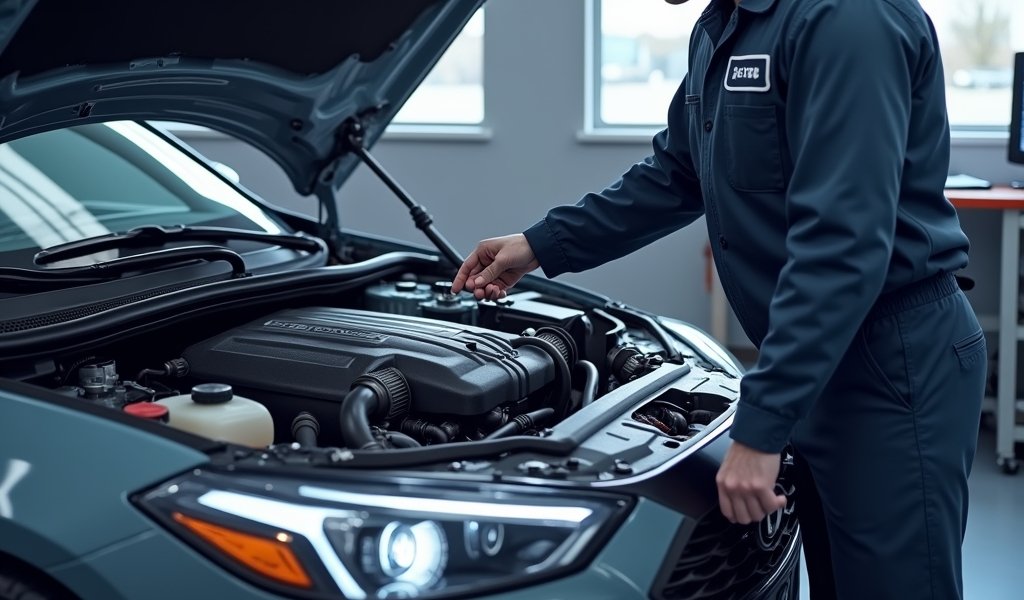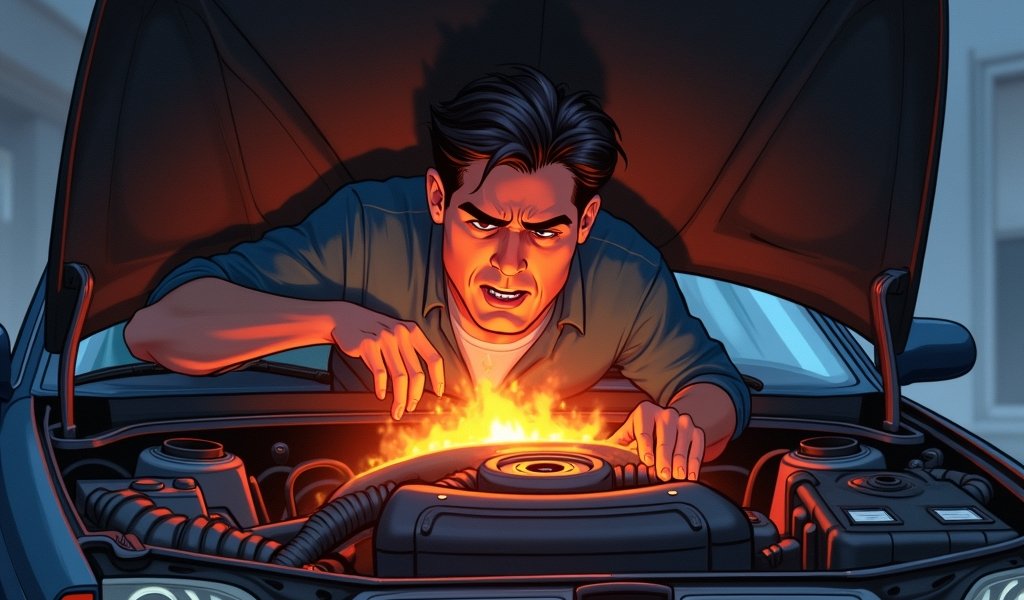Overview
This article explains the critical role of a vehicle’s thermostat opening temperature in maintaining proper engine function, detailing how the right temperature (typically 180-195°F) ensures optimal performance while preventing overheating and efficiency issues. It provides five signs of thermostat problems (fluctuating gauge, overheating, slow warm-up, poor fuel economy, check engine light), explores common causes, and offers testing methods and solutions including replacement, cooling system flushes, and preventative maintenance.
Table of Contents
- Understanding the Thermostat Opening Temperature
- Why Correct Thermostat Opening Temperature Matters
- 5 Signs of an Incorrect Thermostat Opening Temperature
- Common Causes of Thermostat Temperature Issues
- 5 Proven Fixes for Thermostat Opening Temperature Problems
- How to Test Your Thermostat at Home
- Preventing Future Thermostat Problems
- Conclusion
- Frequently Asked Questions
Understanding the Thermostat Opening Temperature
The thermostat opening temperature is one of those critical yet often overlooked components that keep your engine running smoothly. Think of it as the gatekeeper for your cooling system – opening and closing at specific temperatures to regulate coolant flow. Most vehicle thermostats typically open at temperatures between 180°F and 195°F (82°C to 91°C), but this can vary depending on your specific make and model.
When working correctly, your thermostat stays closed while the engine warms up, allowing it to reach optimal operating temperature quickly. Once that magic number is reached, it opens gradually to allow coolant to flow through the radiator, preventing overheating. It’s an elegantly simple solution that’s been keeping engines happy for decades.
I’ve spent years fixing cooling systems, and I can tell you that understanding this component is crucial for maintaining engine health. When your thermostat’s opening temperature is off, it creates a domino effect of problems throughout your engine. Let’s dig into why this matters and how to fix it when things go wrong.
Why Correct Thermostat Opening Temperature Matters
Getting the thermostat opening temperature right isn’t just about avoiding overheating – though that’s certainly important. Your engine is designed to operate within a specific temperature range, and straying from that range impacts everything from fuel efficiency to emissions.
When a thermostat opens too early (at a lower temperature than specified), your engine might never reach its optimal operating temperature. This leads to incomplete fuel combustion, increased emissions, accelerated engine wear, and that frustrating check engine light glowing on your dashboard. I’ve seen customers waste hundreds on unnecessary repairs when the culprit was simply a thermostat opening at the wrong temperature.
On the flip side, a thermostat that opens too late or gets stuck closed can cause rapid engine overheating, potentially leading to warped cylinder heads, blown head gaskets, or even catastrophic engine failure. According to a study in the Journal of Thermal Engineering, maintaining proper operating temperature can extend engine life by up to 30% – that’s thousands of miles of additional service from your vehicle.

5 Signs of an Incorrect Thermostat Opening Temperature
Catching thermostat problems early can save you from expensive repairs down the road. Here are the telltale signs I look for when diagnosing thermostat opening temperature issues:
1. Fluctuating Temperature Gauge
If your temperature gauge can’t seem to make up its mind, jumping between normal and hot (or even cold and normal), your thermostat might be opening and closing at the wrong temperatures. This erratic behavior often indicates a thermostat that’s beginning to fail, opening too early or too late in its cycle.
2. Overheating Engine
The most obvious and dangerous symptom is an overheating engine. If your temperature gauge creeps into the red zone or you see steam coming from under the hood, pull over immediately. This could mean your thermostat is stuck closed or opening at a temperature that’s too high for your cooling system to manage effectively.
3. Engine Takes Too Long to Warm Up
On cold mornings, does your heater blow cold air much longer than it should? If your engine takes forever to reach operating temperature (typically more than 10 minutes of driving), your thermostat might be opening too early or stuck partially open, preventing the engine from warming up properly.
4. Poor Fuel Economy
An engine that runs too cool due to a prematurely opening thermostat won’t burn fuel efficiently. If you’ve noticed your gas mileage taking a nosedive without any other obvious causes, your thermostat could be the hidden culprit keeping your engine from reaching its efficiency sweet spot.
5. Check Engine Light
Modern vehicles monitor engine temperature carefully. When the engine coolant temperature sensor detects values outside the expected range, it will often trigger the check engine light. Specific codes like P0128 (thermostat malfunction) point directly to thermostat opening temperature issues.
Common Causes of Thermostat Temperature Issues
Understanding why thermostats fail can help you both fix current problems and prevent future ones. Here are the most common culprits I encounter in my shop:
Age and Wear
Thermostats aren’t designed to last forever. The constant cycling between hot and cold causes metal fatigue and deterioration of the wax element that controls opening. Most thermostats last between 80,000 and 100,000 miles, though some fail earlier, especially in harsh conditions.
Incorrect Thermostat Installation
I can’t count how many times I’ve seen DIYers install the wrong thermostat for their vehicle. Each engine has specific temperature requirements, and installing a 180°F thermostat when your vehicle calls for a 195°F unit will cause problems. Equally problematic is installing the thermostat backward or forgetting to use a new gasket.
Contaminated Coolant
Old, dirty coolant can deposit minerals and debris around the thermostat, preventing it from opening and closing properly. Regular coolant flushes help prevent this buildup and extend the life of your thermostat and entire cooling system.
Air Pockets in the Cooling System
Trapped air can cause false temperature readings and erratic thermostat behavior. Proper bleeding of the cooling system after any service is essential for accurate thermostat function and temperature regulation.
Failed Temperature Sensor
Sometimes what appears to be a thermostat issue is actually a faulty temperature sensor giving incorrect readings to your car’s computer. According to CarMD’s Vehicle Health Index, temperature sensor failures rank among the top 10 check engine light triggers.
5 Proven Fixes for Thermostat Opening Temperature Problems
When you’re facing thermostat temperature issues, here are the solutions I recommend to my customers at Knows Your Car:
1. Replace the Thermostat
The most straightforward solution is often replacing the thermostat with the correct OEM (Original Equipment Manufacturer) part. This ensures you get the right opening temperature for your specific vehicle. Thermostats are relatively inexpensive (typically $10-30) and prevent costly engine damage. Always check your owner’s manual or consult with a professional to ensure you’re getting the right temperature rating.
2. Flush the Cooling System
Sometimes the thermostat itself isn’t the problem, but rather the environment it’s operating in. A complete cooling system flush removes contaminants, rust, and scale that can interfere with proper thermostat operation. While doing this, inspect your radiator hoses for signs of deterioration or leaks.
3. Bleed the Cooling System
Air pockets can cause false temperature readings and erratic thermostat behavior. After any cooling system service (or if you suspect air in the system), properly bleed the system following your vehicle’s specific procedure. Many modern vehicles have dedicated bleed screws to make this process easier.
4. Update the Engine Control Module
In some cases, especially with newer vehicles, the engine control module (ECM) might need a software update to properly interpret temperature signals and manage the cooling system. Check with your dealer to see if there are any applicable updates for your vehicle’s ECM.
5. Upgrade to a Performance Thermostat
For high-performance applications or vehicles used in extreme conditions, consider a racing thermostat with more precise control characteristics. These specialized thermostats often open at lower temperatures for track use or higher temperatures for better efficiency in cold climates. Just be sure any modification is appropriate for your specific driving conditions and vehicle design.

How to Test Your Thermostat at Home
Before replacing components, you can perform a simple test to check if your thermostat is opening at the correct temperature. Here’s my tried-and-true method:
The Pot Test
You’ll need:
- A cooking pot with water
- A cooking thermometer
- String or wire
- The suspect thermostat
First, remove the thermostat from your vehicle. Tie a string to it and suspend it in a pot of cold water, ensuring it doesn’t touch the bottom. Slowly heat the water while monitoring the temperature with your cooking thermometer. Watch closely as the temperature approaches the thermostat’s rated opening temperature (stamped on the thermostat itself).
A properly functioning thermostat should begin to open within a few degrees of its rated temperature. You’ll see the valve clearly move as the internal wax element expands. If it doesn’t open, opens too early, or only opens partially, you’ve found your problem.
In-Vehicle Testing
If you prefer not to remove the thermostat, you can perform a basic test while it’s installed:
- Start with a cold engine
- Start the vehicle and place your hand on the upper radiator hose
- The hose should remain cool for several minutes while the engine warms up
- Once the engine reaches operating temperature (usually when the temperature gauge shows normal), the hose should suddenly become hot as the thermostat opens
If the hose gets hot immediately, your thermostat is stuck open or missing. If it never gets hot, the thermostat is likely stuck closed.
Preventing Future Thermostat Problems
An ounce of prevention is worth a pound of cure, especially when it comes to cooling system maintenance. Here are my top recommendations for preventing thermostat issues:
Regular Coolant Changes
Fresh coolant provides proper corrosion protection and helps prevent the buildup of deposits that can interfere with thermostat operation. Follow your manufacturer’s recommendation, but as a general rule, change conventional coolant every 30,000 miles and extended-life coolant every 100,000 miles.
Use Quality Parts
When replacing your thermostat, invest in quality OEM or equivalent aftermarket parts. The few extra dollars spent on a quality thermostat can save hundreds in prevented engine damage. Avoid the temptation of ultra-budget parts for critical systems like cooling.
Address Minor Cooling Issues Promptly
Don’t ignore warning signs like slight temperature fluctuations or minor leaks. Small cooling system problems can escalate quickly and lead to thermostat damage. A stitch in time really does save nine when it comes to cooling systems.
Proper Warm-Up
Especially in cold weather, give your engine time to reach operating temperature before demanding maximum performance. This allows the thermostat to function as designed and prolongs its life. Those few minutes of gentle driving while your engine warms up pay dividends in component longevity.
Conclusion
The thermostat opening temperature might seem like a small detail in your vehicle’s complex systems, but it plays an outsized role in engine health, performance, and longevity. By understanding how it works, recognizing the signs of failure, and knowing how to address issues, you’re well-equipped to keep your cooling system in top shape.
Whether you’re facing current thermostat problems or simply want to prevent future issues, the information in this guide should help you make informed decisions about your vehicle’s cooling system maintenance. Remember, when in doubt, consult with a professional technician who can provide model-specific advice.
At Knows Your Car, we’re committed to helping you understand the mechanical systems that keep your vehicle running smoothly. For more automotive tips, maintenance advice, and DIY guides, subscribe to our newsletter. We’ll deliver expert insights directly to your inbox, helping you become a more informed and capable vehicle owner.
Frequently Asked Questions
How often should I replace my car’s thermostat?
Most thermostats should be replaced every 80,000-100,000 miles as preventative maintenance. Replace sooner if you notice any symptoms of failure like temperature fluctuations or overheating.
Can I drive with a faulty thermostat?
It’s not recommended as it can lead to engine overheating or poor efficiency. A stuck-closed thermostat can cause catastrophic engine damage within minutes of driving.
What temperature should my car thermostat open at?
Most passenger vehicles use thermostats that open between 180°F and 195°F (82°C to 91°C). Check your owner’s manual for your specific vehicle’s requirements.
How much does it cost to replace a car thermostat?
The part typically costs $10-30, with professional installation adding $100-200 depending on your vehicle. Many models allow for relatively easy DIY replacement, saving on labor costs.
Can a thermostat get stuck partially open?
Yes, thermostats can get stuck partially open, causing inconsistent engine temperatures. This often results in poor fuel economy and performance as the engine struggles to maintain optimal operating temperature.

